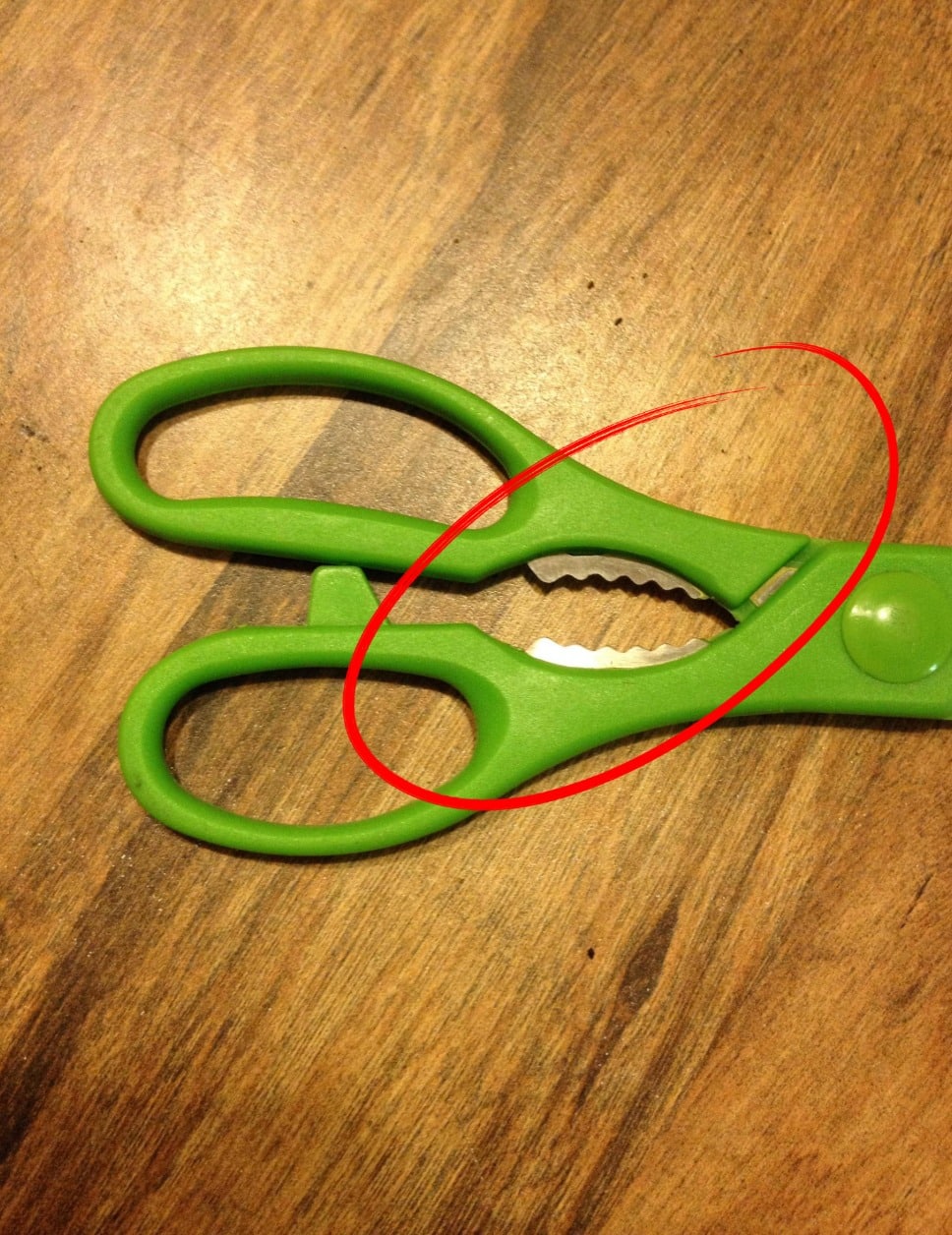Ever noticed the little toothed section between the handles of your kitchen scissors—the jagged ridges that look totally random? If you’ve never used them, you’re not alone. Most people think it’s just some odd design choice, but that mysterious part is actually a built-in tool you’ve probably been ignoring for years. Let’s break down what it is, how to use it, and why it’s one of the most underrated features hiding in your kitchen.
What Is That Toothed Part Anyway?
You’ll spot it where the handles curve inward. Sometimes it’s metal, other times reinforced plastic, but always rugged-looking. When you close the scissors, the ridges align to create a strong grip. This feature is often called a “jar opener,” “nutcracker,” or even a “bone cracker” depending on the brand. At its core, it’s a multipurpose gripper designed to give you traction when your hands alone can’t.
Trick #1: Open Stubborn Jars and Bottles
Struggling with a vacuum-sealed jam jar? That’s where the gripper comes in. Close the scissors just enough so the teeth meet, slide the jar lid into the ridged section, and twist. The grooves give you traction, the handles give you leverage, and the lid finally gives up the fight. This also works for small bottle caps like soda or sauce bottles—especially helpful if you have arthritis or weak grip strength.
Trick #2: Crack Nuts Without a Gadget
No nutcracker? No problem. Place a walnut, pecan, or hazelnut in the toothed area and gently squeeze until the shell cracks. Rotate and repeat until you can peel it open. Just don’t crush too hard—you want to crack the shell, not pulverize the nut inside.
Trick #3: Help With Poultry Bones
If your scissors are heavy-duty poultry shears, that jagged section can help grip and snap smaller bones like chicken wings or thighs. The key is steady pressure—not brute force. But don’t try this with cheap scissors or you’ll end up breaking them (and maybe hurting yourself).
Bonus Uses You Haven’t Thought Of
That ridged grip is more versatile than you think. It can hold slippery plastic caps, crack crab legs or lobster shells, twist out soft synthetic corks, and even grip stubborn twist-ties or plastic seals so you can slice them cleanly. Basically, whenever your hands slip in frustration, the gripper is there to save the day.
Why Do Scissors Even Have This Feature?
It’s simple—manufacturers want multipurpose tools. Instead of buying a jar opener, nutcracker, and bone shears separately, one solid pair of scissors can do the work of all three. It’s a quiet space-saver that makes life easier, especially in small kitchens.
Does Your Pair Have It?
Not all scissors do. It’s most common on:
- Heavy-duty kitchen scissors
- Poultry or bone shears
- Multipurpose utility scissors
Check the space between the handles—if you see ridges that align when you close them, you’ve got one.
Safety Reminders Before You Try It
Don’t force it on hard items like thick bones or unbreakable nuts—scissors aren’t pliers. Keep your fingers clear of the teeth when twisting. Always clean the ridged section thoroughly, especially after raw meat, since food residue can get trapped. And don’t use it for non-food tasks like prying open paint cans—you’ll ruin your scissors.
The Overlooked Power Move in Your Kitchen
What looks like a random notch is actually a built-in multi-tool hiding in plain sight. It can grip, twist, crack, and open with ease, transforming your regular scissors into a problem-solving kitchen essential. So next time you grab your kitchen shears, remember—you’re not just holding scissors. You’re holding a jar opener, nutcracker, mini bone press, and frustration-saver, all in one. You just have to use it.
